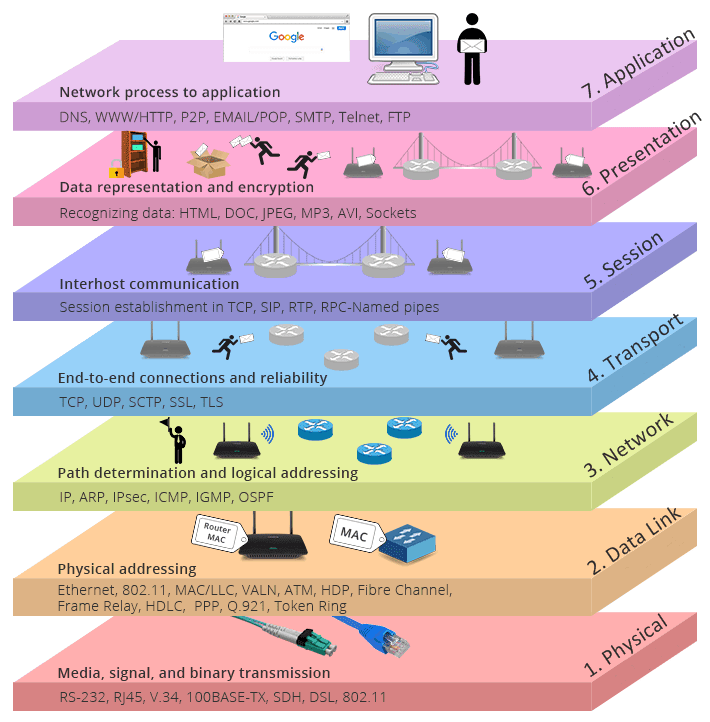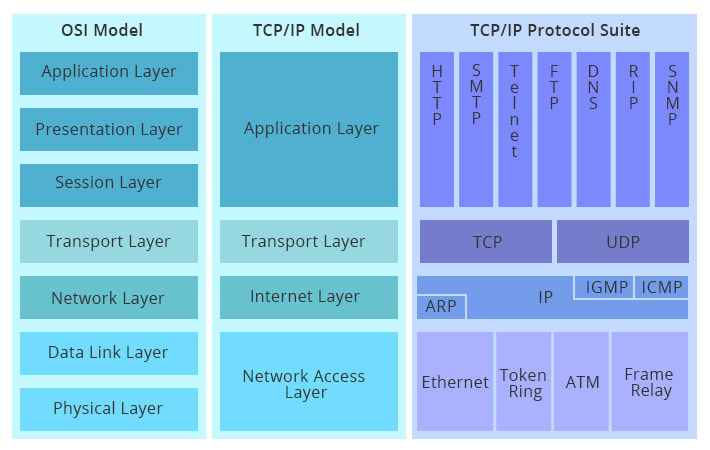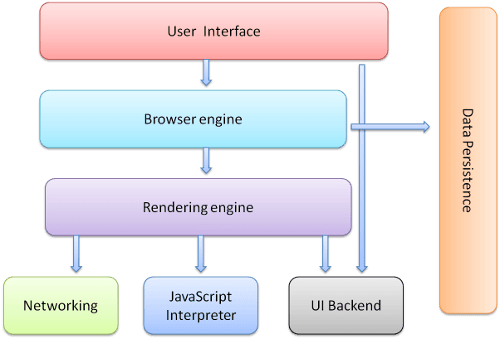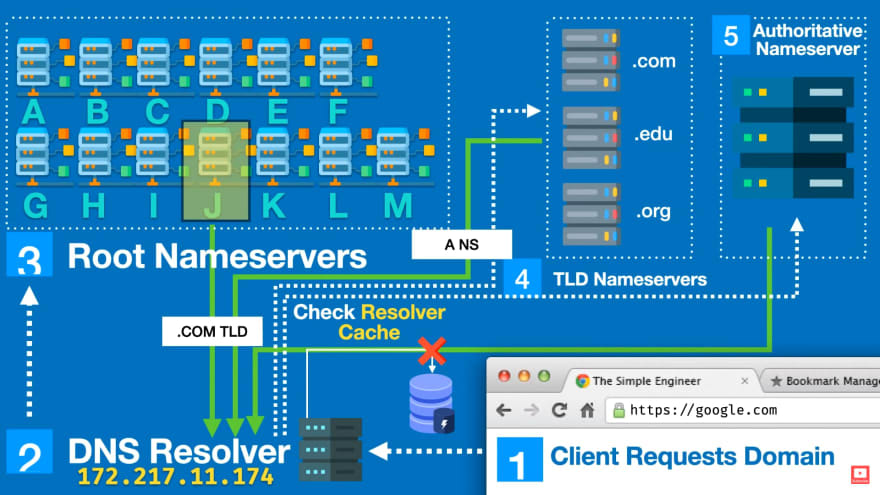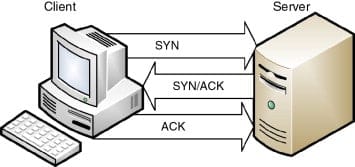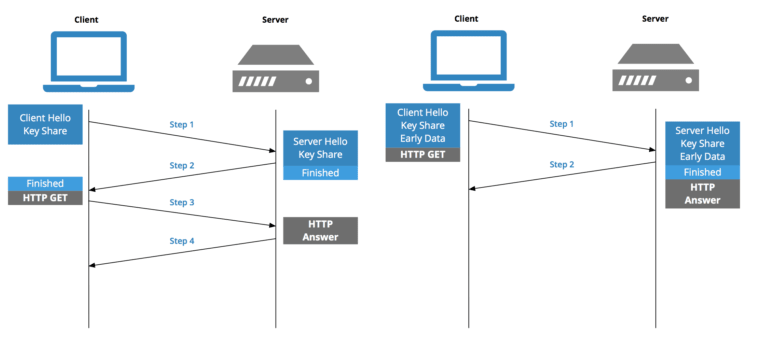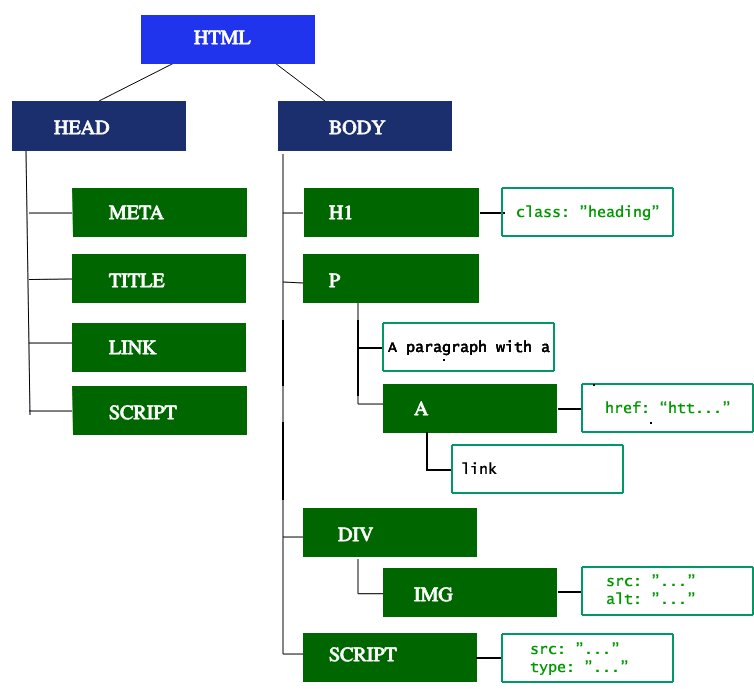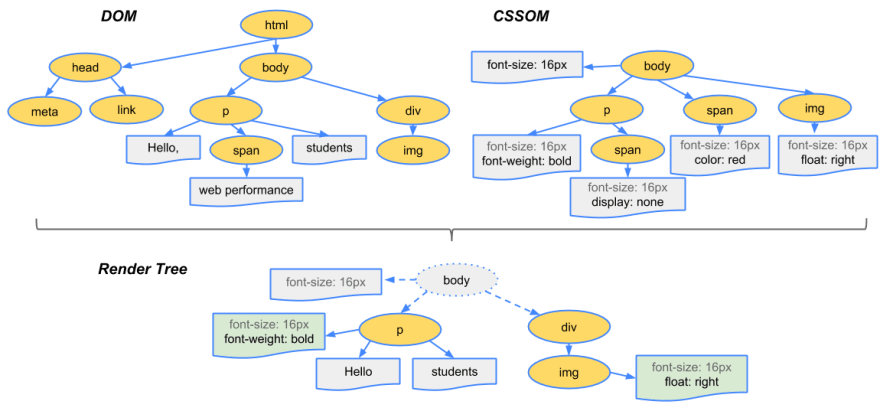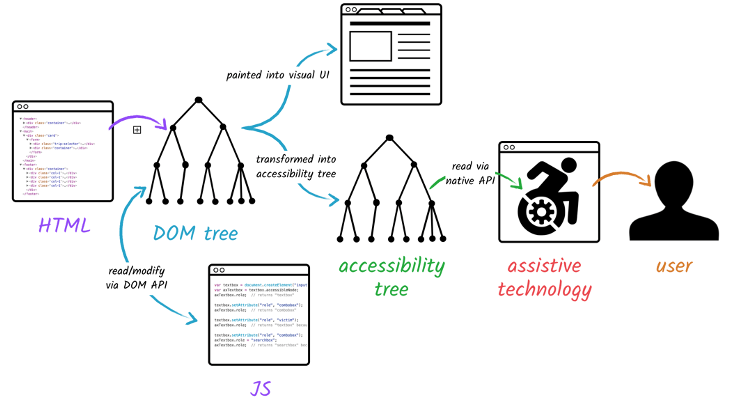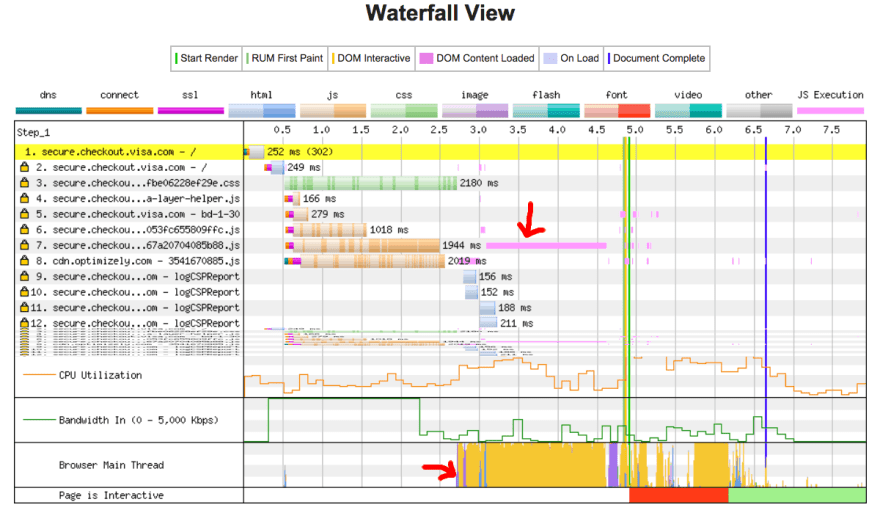This content originally appeared on DEV Community and was authored by Paulo
This article covers the processes that happen in-between a user entering a web address in a browser and a web page showing up as a result.
Overview
If you're like me—if you like to understand the tools you work with—I hope this article helps you learn something you did not know before. Let's get started!
There are a handful of steps that occur between the time a user requests a web page and the time it displays in their browser. I've divided these steps into the following sections:
-
Navigation
- Resolving the web address (URL)
- Establishing a connection to the server (TCP 3-way handshake)
- Establishing a security protocol (TLS negotiation)
-
Fetching
- HTTP request
- HTTP response
-
Parsing
- Building the DOM tree
- Building the CSSOM tree
- Combining the trees into the render tree
- Preload Scanner
- JavaScript Compilation
- Building the Accessibility Tree
-
Rendering
- Layout
- Paint
- Compositing
-
Finalising
- Javascript Occupied.
- User can now browse the page!
Use this section to jump to any particular section of interest. However, if you're new to some of these concepts—stay here. It is time for a quick background lesson.
Background
This section contains a quick and general overview of the core background concepts that are required to understand the later parts of the article. You may skip this section if you're already familiar with them!
Networking models
Models exist to explain how data is transmitted through a network. And there even exists a model so widely known that even those that do not partake in hackerman things might've heard of—we call it the Open Systems Interconnected (OSI) model. Here it goes:
The Open Systems Interconnection (OSI) model describes seven layers that computer systems use to communicate over a network. Each upper layer is one level of abstraction higher than the previous, all the way up to the application (browser) layer which we will be talking about.
It’s important to note that the OSI model is a “conceptual model” for how applications communicate over a network. It is not a protocol. Do not get the two confused. Protocols are strict sets of rules that may live within these layers.
An older and very similar model, and more relevant to the article, is the TCP/IP model. This model is used for both modelling current Internet architecture and providing a set of rules that are followed by all forms of transmission over the network.
I will be referring to this model and its associated protocols throughout the article.
As hinted at before, any data sent from an application to another will have to travel up and down through these layers a few numbers of times (depending on how many middle men there are). Of course, this happens incredibly fast nowadays, however, it still does happen and understanding the overview of the process is something that every developer should know. The following is an image representation of this process between a server and a client application:
Take our example, a user requesting to browse a page using a browser: the request is first sent to the application layer, where it is processed from layer to layer down with each layer performing its designated functions. The data is then transmitted over the physical layer of the network until the destination server or another device receives it. At this point the data is passed up through the layers again, each layer performing its assigned operations until the data is used by the web server software. This process is repeated again for the response of the server. This is how machines communicate.
High-level abstraction of a browser
The later sections of the article will be covering how a typical browser displays the content of the page on the screen. A high-level understanding of the browser is important when reading those sections. I will be referencing some of the following browser components:
- The user interface: this includes the address bar, back/forward button, bookmarking menu, etc. Every part of the browser display except the window where you see the requested page.
- The browser engine: marshals actions between the UI and the rendering engine.
- The rendering engine: responsible for displaying requested content. For example, if the requested content is HTML, the rendering engine parses HTML and CSS, and displays the parsed content on the screen.
- Networking: for network calls such as HTTP requests, using different implementations for different platforms behind a platform-independent interface.
- UI backend: used for drawing basic widgets like combo boxes and windows. This backend exposes a generic interface that is not platform-specific. Underneath it uses operating system user interface methods.
- JavaScript interpreter: Used to parse and execute JavaScript code.
- Data storage: This is a persistence layer. The browser may need to save all sorts of data locally, such as cookies. Browsers also support storage mechanisms such as localStorage, IndexedDB, WebSQL and FileSystem.
It is important to note that browsers such as Chrome have a multi-process approach for performance and security reasons. This means that they run instances of some of these components, such as the rendering engine, for each tab (each tab is a separate process). You can find proof of this by checking chrome's processes in a task manager.
As you can see each tabe has a process priority and CPU/Network/GPU statistics implying that they work like normal processes. Indeed they do. You can further confirm this by listing your OS's tasks and you will find them.
Finally, it is also important to note that what you just read so far in this background section is a very high-level generalisation of how networks and browsers work. Not all networks strictly abide by the OSI/TCP IP models and the main browsers in use today are all different in their own ways but share a common base of concepts that allows us to abstract them to what you've just read. For browsers, this is because they all follow (to some degree) the specifications maintained by the W3C (World Wide Web Consortium) organization, which is the standards organization for the web. As an example, their rendering engines are different, Internet Explorer uses Trident, Firefox uses Gecko, Safari uses WebKit. Chrome, Edge and Opera use Blink, a fork of WebKit.
Journey of a page
You open up a browser and type in www.google.com. This is what happens.
Navigation
The first step is navigating to the correct place. Navigating to a web page is finding where the assets for that page are located. To us, web pages are simply domain names, but to computers they resolve into IP addresses. If you navigate to www.google.com, the page resources will be located on a server with an IP address such as 93.184.216.34 (of sorts). If you’ve never visited this site, a Domain Name System (DNS) lookup must happen.
Round Trip Time
Round-trip time (RTT) is the duration, measured in milliseconds, from when a browser sends a request to when it receives a response from a server. It's a key performance metric for web applications and one of the main factors, along with Time to First Byte (TTFB), when measuring page load time and network latency.
I will be annotating each network process with their corresponding RTT.
Resolving a web address - The DNS Process (O RTT)
An overview of the DNS process for www.google.com is as follows:
- Check browser & OS cache, return if IP found.
- Browser sends out a request asking for a DNS resolver.
- DNS resolver checks its cache, return if IP is found.
- DNS resolver sends out a request asking root nameservers.
- A root nameserver responds to the DNS resolver with an IP address to a TLD nameserver (in this case the TLD for extensions of
.com). - DNS resolver sends out another request, now to the TLD nameserver, asking if they know what the IP is.
- TLD nameserver responds back to the DNS resolver with an IP of the authoritative nameserver.
- DNS resolver sends out the final request to the authoritative nameserver asking for the IP.
- The authoritative nameserver will scan zones files to find the domainname:ipaddress mapping and will return whether it exists or not to the DNS resolver.
- Finally, the DNS resolver will now respond back to the browser with the IP of the server the browser is trying to communicate.
Note that this process is usually incredibly fast and rarely follows through in its entirety because of all the layers of caching. It was designed to be fast!
Establishing a connection to the server - TCP Handshake (1 RTT)
Now that the IP address is known, the browser sets up a connection to the server via a TCP three-way handshake.
TCP uses a three-way handshake to establish a reliable connection. The connection is full-duplex, and both sides synchronize (SYN) and acknowledge (ACK) each other. The exchange of these four flags is performed in three steps—SYN, SYN-ACK, and ACK—as shown in
- The client chooses an initial sequence number, set in the first SYN packet.
- The server also chooses its own initial sequence number.
- Each side acknowledges the other's sequence number by incrementing it; this is the acknowledgement number.
Once a connection is established, ACKs typically follow for each segment. The connection will eventually end with an RST (reset or tear down the connection) or FIN (gracefully end the connection).
This mechanism is designed so that two entities attempting to communicate, in this case, the browser and web server, can negotiate the parameters of the network TCP socket connection before transmitting data, in our case, it will be over HTTPS—the secure version of HTTP.
HTTPS is HTTP with encryption. The only difference between the two protocols is that HTTPS uses TLS (SSL) to encrypt normal HTTP requests and responses. As a result, HTTPS provides a solid layer of security over HTTP. A website that uses HTTP has http:// in its URL, while a website that uses HTTPS has https://.
Establishing a security protocol - TLS Negotiation (~2 RTT)
For secure connections established over HTTPS, another "handshake" is required. This handshake, or rather the TLS negotiation, determines which cypher will be used to encrypt the communication, verifies the server, and establishes that a secure connection is in place before beginning the actual transfer of data.
While making the connection secure adds time to the page load, a secure connection is worth the latency expense, as the data transmitted between the browser and the web server cannot normally be decrypted by a third party. TLS has come a long way and version 1.3 upwards has reduced the Round Trip Time (RTT) from 4 all the way to 2 or even 1 depending on the situation.
Assuming DNS is instantaneous and adding in the HTTP fetch RTT (next section), this leaves 4 round trips before the browser can start showing the page. If you’re visiting a site you’ve recently connected to, the TLS handshake phase can be shortened from 2 round trips to 1 with TLS session resumption.
- New Connection: 4 RTT + DNS
- Resumed Connection: 3 RTT + DNS
Fetching
Now that we have a TCP connection setup and the TLS exchange has been completed, the browser can now begin to fetch the page's resources. It starts by fetching the markup document for the page. It does this by using the HTTP protocol. HTTP requests are sent via TCP/IP and in our case encrypted with Transport Layer Security (TLS)—since google uses HTTPS.
HTTP Request
To fetch a page an idempotent (not changing the server state) request is made. We use the HTTP GET request.
-
GET—Requests information from a given server using a Uniform Resource Identifier (URI). GET requests only retrieve data and do not cause changes in state. No matter how many times you request the same resource, you will never cause a change in state.
There are other idempotent request types (PUT, DELETE) and not idempotent (POST, ...). They don't matter for fetching pages.
GET / HTTP/2
Host: www.google.com
User-Agent: Mozilla/5.0 (Windows NT 10.0; Win64; x64; rv:89.0) Gecko/20100101 Firefox/89.0
Accept: text/html,application/xhtml+xml,application/xml;q=0.9,image/webp,*/*;q=0.8
Accept-Language: en-GB,en;q=0.5
Accept-Encoding: gzip, deflate, br
Connection: keep-alive
Upgrade-Insecure-Requests: 1
Cache-Control: max-age=0
TE: Trailers
HTTP Response
Once the webserver receives the request. It will parse the request and try to fulfil it. We assume the request is valid and the files are available. It will reply with an HTPP response attaching the relevant response headers and the contents of the HTML.
HTTP/2 200 OK
date: Sun, 18 Jul 2021 00:26:11 GMT
expires: -1
cache-control: private, max-age=0
content-type: text/html; charset=UTF-8
strict-transport-security: max-age=31536000
content-encoding: br
server: gws
content-length: 37418
x-xss-protection: 0
x-frame-options: SAMEORIGIN
domain=www.google.com
priority=high
X-Firefox-Spdy: h2
*the source code of the HTML document will be in the body of the response.
Parsing
Once the browser receives the response, it can begin parsing the information received. Parsing is the step the browser takes to turn the data it receives over the network into the DOM and CSSOM, which is used by the renderer to paint a page to the screen.
The Document Object Model (DOM) is an internal representation of the objects that comprise the structure and content of the markup (HTML in this case) document the browser just received. It represents the page so that programs can change the document structure, style, and content.
The DOM represents the document as nodes and objects. That way, programming languages can connect to the page. There are many different types of nodes in a DOM tree. An example part of the specification for the DOM Node Interface looks as follows:
Node.ELEMENT_NODENode.ATTRIBUTE_NODENode.TEXT_NODENode.CDATA_SECTION_NODENode.PROCESSING_INSTRUCTION_NODENode.COMMENT_NODENode.DOCUMENT_NODENode.DOCUMENT_TYPE_NODENode.DOCUMENT_FRAGMENT_NODENode.NOTATION_NODE
These node types cover all possible nodes in the document. Such representations help programming languages connect to the page so that they can manipulate it.
To conclude our parsing preface, we need to talk about the CSSOM.
The CSS Object Model (CSSOM) is a set of APIs allowing the manipulation of CSS from JavaScript. It is much like the DOM, but for the CSS rather than the HTML. It allows users to read and modify CSS style dynamically. It is represented very similarly to the DOM, as a tree, and it will be used along with the DOM to form a render tree so that the browser can begin its rendering process. Let's find out how by going through the entire process.
Building the DOM tree
The first step is processing the HTML markup and building the DOM tree. HTML parsing involves tokenization and tree construction.
HTML may come as a surprise in the world of parsing as it cannot be parsed through conventional means as it cannot be defined by a Context Free Grammar (CFG). Instead, there is a formal format for defining HTML which is called the Document Type Definition (DTD). I will not be going too much into detail about how this is done but main the reasons for this are:
- The forgiving nature of the language.
- The fact that browsers have traditional error tolerance to support well known cases of invalid HTML.
- The parsing process is reentrant. For other languages, the source doesn't change during parsing, but in HTML, dynamic code (such as script elements containing document.write() calls) can add extra tokens, so the parsing process actually modifies the input.
Unable to use the regular parsing techniques, browsers create custom parsers for parsing HTML.
The parsing algorithm is described in detail by the HTML5 specification. The algorithm consists of two stages: tokenization and tree construction.
- Tokenization is the lexical analysis, parsing the input into tokens. Among HTML tokens are start tags, end tags, attribute names and attribute values.
- Tree construction is essentially creating a tree based of the parsed tokens and what we will be focusing on—The DOM tree.
The DOM tree describes the content of the document. The <html> element is the first tag and root node of the document tree. The tree reflects the relationships and hierarchies between different tags. Tags nested within other tags are child nodes. The greater the number of DOM nodes, the longer it takes to construct the DOM tree. Below you can find a visual representation of the DOM tree—The output of the parser:
When the parser finds non-blocking resources, such as an image, the browser will request those resources and continue parsing. Parsing can continue when a CSS file is encountered, but <script> tags—particularly those without an async or defer attribute—block rendering, and pause the parsing of HTML. Though the browser's preload scanner hastens this process, excessive scripts can still be a significant bottleneck.
Building the CSSOM tree
The second step is processing CSS and building the CSSOM tree. In a similar fashion to the DOM parsing phase, the browser goes through each rule set in the CSS, creating a tree of nodes with parent, child, and sibling relationships based on the CSS selectors.
In regards to parsing, well, unlike HTML, CSS is a context free grammar and can be parsed using regular CFG parsing techniques. In fact the CSS specification defines CSS lexical and syntax grammar.
As with HTML, the browser needs to convert the received CSS rules into something it can work with. From there, it repeats the HTML-to-object process, but for the CSS.
Combining the trees into the render tree
The CSSOM and DOM trees are combined into a render tree, which is then used to compute the layout of each visible element and serves as an input to the paint process that renders the pixels to screen.
To construct the render tree, the browser roughly does the following:
- Starting at the root of the DOM tree, traverse each visible node.
- Some nodes are not visible (for example, script tags, meta tags, and so on), and are omitted since they are not reflected in the rendered output.
- Some nodes are hidden via CSS and are also omitted from the render tree; for example, the span node—in the example above—is missing from the render tree because we have an explicit rule that sets the "display: none" property on it.
- For each visible node, find the appropriate matching CSSOM rules and apply them.
- Emit visible nodes with content and their computed styles.
The final output is a render that contains both the content and style information of all the visible content on the screen. With the render tree in place, we can proceed to the "layout" stage.
Preload Scanner
While the browser's main thread is busing building the DOM tree it has a helper worker scan through the content available. This helper is the preload scanner and will prepare high priority fetch request for resources like CSS, JavaScript, and web fonts. This is an optimization added over the parsing stage as it would take far too long to make these requests as the parser finds references to them.
<link rel="stylesheet" src="styles.css"/>
<script src="myscript.js" async></script>
<img src="myimage.jpg" alt="image description"/>
<script src="anotherscript.js" async></script>
Taking the example above, the preload scanner will try to find the scripts and images, and start downloading them. There are ways to communicate to the preload scanner via the html—the attributes: async and defer.
-
async: When present, it specifies that the script will be executed asynchronously as soon as it is available. -
defer: When present, it specifies that the script is executed when the page has finished parsing.
Waiting to obtain CSS doesn't block HTML parsing or downloading, but it does block JavaScript, because JavaScript is often used to query CSS properties’ impact on elements.
JavaScript Compilation
While the CSS is being parsed and the CSSOM created, other assets, including JavaScript files, are downloading (thanks to the preload scanner). JavaScript is interpreted, compiled, parsed and executed. The scripts are parsed into abstract syntax trees. Some browser engines take the Abstract Syntax Tree and pass it into an interpreter, outputting bytecode which is executed on the main thread. This is known as JavaScript compilation.
Building the Accessibility Tree
The browser also builds an accessibility tree that assistive devices use to parse and interpret content. The accessibility object model (AOM) is like a semantic version of the DOM. The browser updates the accessibility tree when the DOM is updated. The accessibility tree is not modifiable by assistive technologies themselves.
Until the AOM is built, the content is not accessible to screen readers.
Rendering
Now that the information has been parsed the browser can begin to display it. To achieve this the browser will now use the render tree to produce a visual representation of the document. Rendering steps include layout, paint and, in some cases, compositing.
Layout
Layout is the rendering stage where the geometry and positioning of the render tree nodes are determined.
Once the render tree is built, the layout commences. Layout is a recursive process. It begins at the root renderer, which corresponds to the <html> element of the HTML document. Layout continues recursively through some or all of the frame hierarchy, computing geometric information for each renderer that requires it. The layout usually has the following pattern:
Dirty bit system
In order not to do a full layout for every small change, browsers use a "dirty bit" system. A renderer that is changed or added marks itself and its children as "dirty": needing layout.
There are two flags:
- dirty: node needs a layout.
- children are dirty: node has at least one child that needs a layout.
Overview of layout process
- Parent node determines its own width.
- Parent goes over children and:
- Calculate child render's size
- Calls child layout if they have a dirty descendant
- Parent uses children's accumulative heights and the heights of margins and padding to set its own height–this will be used by the parent renderer's parent.
- Sets its dirty bit to false.
An added important concept is that of reflow. As previously mentioned, the first time the size and position of nodes are determined is called layout. Subsequent recalculations of node size and locations are called reflows. As an example, suppose the initial layout occurs before the image is returned. Since we didn't declare the size of our image, there will be a reflow once the image size is known.
Paint
The third and last stage of rendering. In this painting phase, the browser converts each box calculated in the layout phase to actual pixels on the screen. Painting involves drawing every visual part of an element to the screen, including text, colours, borders, shadows, and replaced elements like buttons and images. The browser needs to do this super quickly.
Painting order
CSS2 defines the order of the painting process. This is actually the order in which the elements are stacked in the stacking contexts. This order affects painting since the stacks are painted from back to front. The stacking order of a block renderer is:
- background colour
- background image
- border
- children
- outline
Paint Layers
Painting can break the elements in the layout tree into layers. Promoting content into layers on the GPU (instead of the main thread on the CPU) improves paint and repaint performance. There are specific properties and elements that instantiate a layer, including <video> and <canvas>, and any element which has the CSS properties of opacity, a 3D transform, will-change, and a few others. These nodes will be painted onto their own layer, along with their descendants, unless a descendant necessitates its own layer for one (or more) of the above reasons.
Layers do improve performance but are expensive when it comes to memory management, so should not be overused as part of web performance optimization strategies.
Compositing
When sections of the document are drawn in different layers, overlapping each other, compositing is necessary to ensure they are drawn to the screen in the right order and the content is rendered correctly.
As the page continues to load assets, reflows can happen (recall our example image that arrived late). A reflow sparks a repaint and a re-composite. Had we defined the size of our image, no-reflow would have been necessary, and only the layer that needed to be repainted would be repainted, and composited if necessary. But we didn't include the image size! When the image is obtained from the server, the rendering process goes back to the layout steps and restarts from there.
Finalising
Once the main thread is done painting the page, you would think we would be "all set." That isn't necessarily the case. If the load includes JavaScript, which was correctly deferred, and only executed after the onload event fires, the main thread might be busy, and not available for scrolling, touch, and other interactions.
Javascript Occupied
Time to Interactive (TTI) is the measurement of how long it took from that first request which led to the DNS lookup and SSL connection to when the page is interactive—interactive being the point in time after the First Contentful Paint when the page responds to user interactions within 50ms. If the main thread is occupied parsing, compiling, and executing JavaScript, it is not available and therefore not able to respond to user interactions in a timely (less than 50ms) fashion.
In our example, maybe the image loaded quickly, but perhaps the anotherscript.js file was 2MB and our user's network connection was slow. In this case, the user would see the page super quickly, but wouldn't be able to scroll without jank until the script was downloaded, parsed and executed. That is not a good user experience. Avoid occupying the main thread, as demonstrated in this WebPageTest example:
In this example, the DOM content load process took over 1.5 seconds, and the main thread was fully occupied that entire time, unresponsive to click events or screen taps.
The user can now browse the page! ?
Yes, after all these stages the user can now both see and interact with the page!
Summary
For a simple page to be displayed in our browser window it may need to go through:
- DNS Lookup: To find out the ip of the web address.
- TCP Handshake: To set up TCP/IP communication between the client and server for the susbsequent steps.
- TLS Handshake: To safeguard the information that will be sent via encryption.
- HTTP communication: To establish a method of communication that browsers can understand.
- Browser Parsing: To parse the HTTP's response—the document of the page to be displayed.
- Browser Rendering: To render the document on the browsers window.
- Javascript Occupied: To wait for JS to compile and execute as it may hog the main thread.
It is incredible the number of things that happen for this seemingly simple task to be accomplished. Truly an impressive journey for our little page :)
There is more...
In a real-world scenario, our little page may have to tackle even more obstacles before reaching its destination things such as: load balancers, proxies, multiple layers of firewalls, etc...
These topics are beasts of their own and if you're curious about how they work I recommend looking them up! Perhaps i'll write something for them in the future.
Thank you for reading,
Paulo ?
Reference
- https://developer.mozilla.org/en-US/docs/Web/Performance/How_browsers_work#overview
- https://www.html5rocks.com/en/tutorials/internals/howbrowserswork
- https://developers.google.com/web/fundamentals/
- https://blog.cloudflare.com/introducing-0-rtt/
- https://blog.cloudflare.com/keyless-ssl-the-nitty-gritty-technical-details/
- https://community.fs.com/blog/tcpip-vs-osi-whats-the-difference-between-the-two-models.html
- https://www.sciencedirect.com/topics/computer-science/three-way-handshake
This content originally appeared on DEV Community and was authored by Paulo
Paulo | Sciencx (2021-07-19T09:04:55+00:00) Journey of a web page – How browsers work. Retrieved from https://www.scien.cx/2021/07/19/journey-of-a-web-page-how-browsers-work/
Please log in to upload a file.
There are no updates yet.
Click the Upload button above to add an update.

